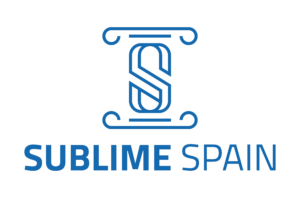Top Hiring Priorities for 2022
It’s no secret that the job market is changing. With new technologies, automation, different demographics and more, the way we will be working in years to come is a question many people are asking. To get an understanding of what is important this year, we have compiled a list of the top hiring priorities for 2022.
Content
1. Develop a strong hiring strategy
When it comes to hiring new employees, it is essential to have a strong strategy in place. This means thinking through the qualities and capabilities that you most value in an employee, as well as what you need from each role within your organization.
It also involves assessing the skills and experience of potential candidates and developing a roadmap for recruiting and onboarding new staff members.
To achieve success in your hiring efforts, it is important to study the strategic priorities of top companies in your industry.
By staying up-to-date on trends in recruitment, you can stay competitive in today’s fast-paced business environment and ensure that your company is able to attract and retain top talent.
At the end of the day, the key to a successful hiring strategy is flexibility – being willing to adapt your approach based on feedback from both employees and applicants alike. With the right mix of initiative and innovation, you will be well on your way to building a truly world-class team!
2. Prioritize finding the right talent
This means focusing on not only the specific skills and experience required for the position but also on finding candidates with the right mindset and work ethic.
- Passionate about their work – Individuals who are passionate about their work are more likely to be motivated and productive. They take pride in their work and are always looking for ways to improve their skills.
- Positive attitude – A positive attitude is contagious and can have a ripple effect on the entire team. Positive employees are also more likely to take on new challenges and be open to feedback.
- Coachable – Those who are coachable are always willing to learn and grow in their roles. They are not afraid of change but instead see it as an opportunity to improve.
- Driven to succeed – Employees who are driven to succeed are highly motivated to achieve their goals. They have a strong work ethic and are always looking for ways to improve their performance.
- Team player – A true team player is someone who is able to work well with others. They understand the importance of communication and collaboration in order to achieve success.
Finding the right talent benefits your company in the long run by ensuring that you have a team of employees who are engaged and invested in their work.
3. Focus on culture fit when hiring new employees
A company’s culture is its shared values, beliefs and behaviours. When hiring, it’s important to look for candidates who fit the company’s culture. A good culture fit means that the candidate is likely to be happy and engaged in their work, which can lead to better job performance and reduced turnover.
There are a few key things to look for when assessing culture fit.
- Does the candidate share the company’s values? For example, if one of your company’s values is innovation, you would want to hire a candidate who is creative and has a track record of coming up with new ideas.
- Does the candidate have the same work style as your existing employees? For example, if your team is very collaborative, you would want to hire a candidate who is also a team player.
- Does the candidate have a similar view of the world as your other employees? For example, if your team is very customer-centric, you would want to hire a candidate who puts the customer first in their decision-making.
Assessing culture fit can be complicated, but it’s worth taking the time to get it right. Hiring employees who are a good fit for your company’s culture can lead to a more positive and productive workplace.
4. Shorten the application process
As today’s competitive job market continues to heat up, most companies are placing an increased emphasis on hiring speed. Companies that are able to hire new employees quickly and efficiently have a critical edge over their competitors. Not only do these organizations benefit from having a larger pool of potential candidates, but they also reduce the challenge of vying for top talent in such a crowded environment.
In order to achieve this level of speed and efficiency in the hiring process, companies must take a strategic approach. This means creating clearly defined job descriptions, streamlined interviewing processes, and reliable supporting tools like applicant tracking systems and onboarding tools.
Additionally, it is important to work closely with recruitment agencies that can help identify and attract high-quality candidates more quickly than traditional methods alone. By prioritizing speed above all else and taking a dynamic approach to the hiring process, businesses can better compete and succeed in today’s tough job market.
5. Recruitment marketing
When it comes to hiring top talent, many organizations recognize that investment in recruitment marketing is critical. A successful recruitment strategy involves not only targeting potential candidates with relevant job postings and targeted messaging but also actively engaging with this audience through social media and other online channels. By creating an attractive employer brand and telling a compelling story about the organization, organizations can set themselves apart from their competitors and attract top talent to take their teams to the next level. Ultimately, a focus on recruitment marketing is key for any organization looking to build a strong and dynamic workforce.
6. Analysing and optimising the recruitment pipeline
An effective recruitment pipeline bridges the gap between identifying a job opening and successfully filling that position with the right candidate. A well-run recruitment pipeline moves candidates through each stage of the hiring process smoothly and efficiently, ensuring that deadlines are met and that all candidates receive fair consideration.
There are a number of key steps involved in an effective recruitment pipeline, including pre-screening resumes, scheduling interviews, managing feedback, and making hiring decisions. To achieve these goals, it is important to keep a close eye on metrics such as wait times and interview conversion rates. With regular monitoring, recruiters can identify bottlenecks or redundancy in their processes and make adjustments accordingly.






